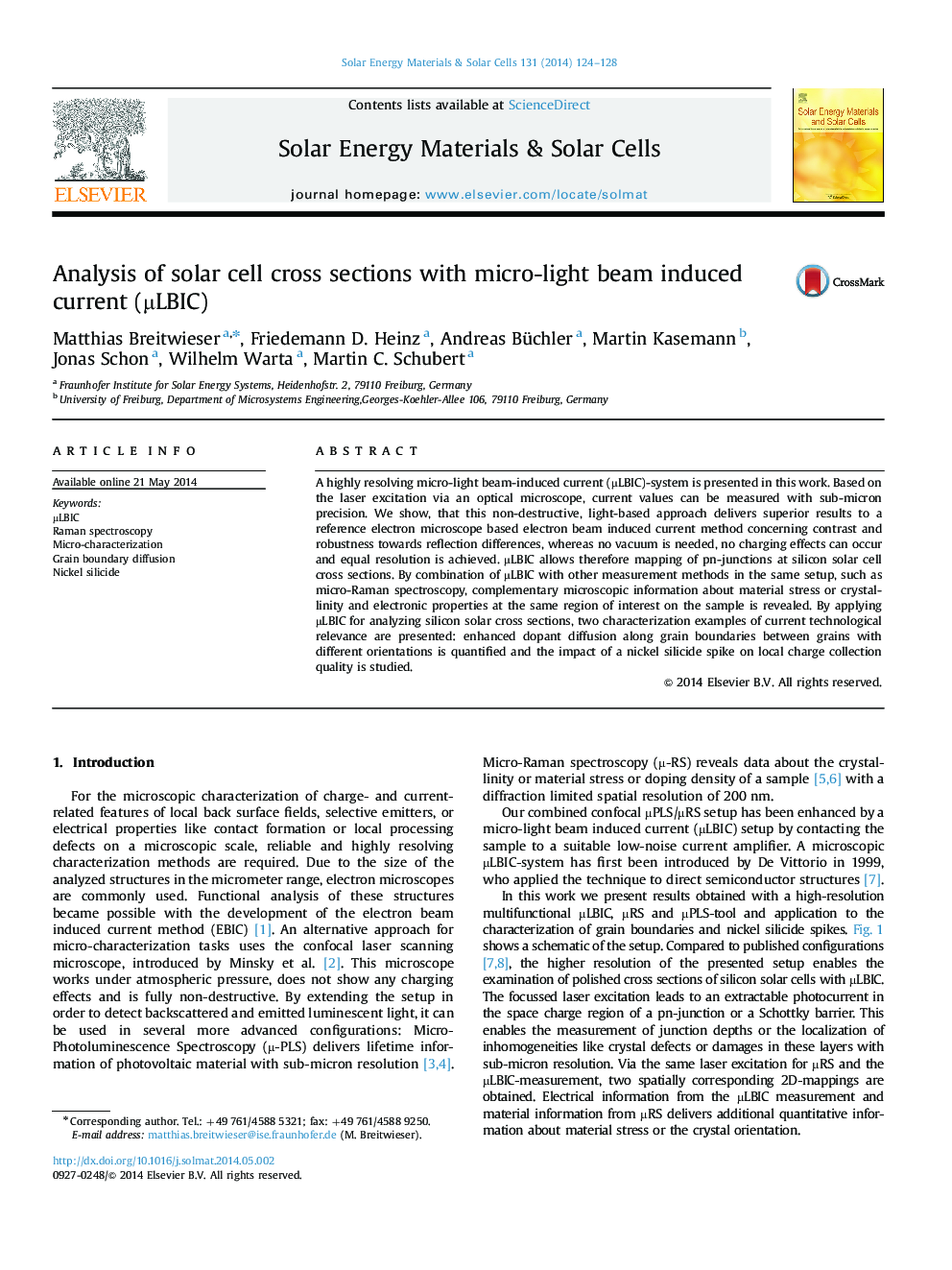| Article ID | Journal | Published Year | Pages | File Type |
|---|---|---|---|---|
| 77959 | Solar Energy Materials and Solar Cells | 2014 | 5 Pages |
•Micro-light beam induced current (µLBIC) is applied to silicon solar cell cross sections.•µLBIC achieves competitive resolution and enhanced contrast compared to EBIC.•Grain boundary diffusion of phosphorous in multicrystalline silicon is quantified.•The electrical impact of a nickel silicide spike is analyzed on the microscopic scale.
abstractA highly resolving micro-light beam-induced current (µLBIC)-system is presented in this work. Based on the laser excitation via an optical microscope, current values can be measured with sub-micron precision. We show, that this non-destructive, light-based approach delivers superior results to a reference electron microscope based electron beam induced current method concerning contrast and robustness towards reflection differences, whereas no vacuum is needed, no charging effects can occur and equal resolution is achieved. µLBIC allows therefore mapping of pn-junctions at silicon solar cell cross sections. By combination of µLBIC with other measurement methods in the same setup, such as micro-Raman spectroscopy, complementary microscopic information about material stress or crystallinity and electronic properties at the same region of interest on the sample is revealed. By applying µLBIC for analyzing silicon solar cross sections, two characterization examples of current technological relevance are presented: enhanced dopant diffusion along grain boundaries between grains with different orientations is quantified and the impact of a nickel silicide spike on local charge collection quality is studied.
